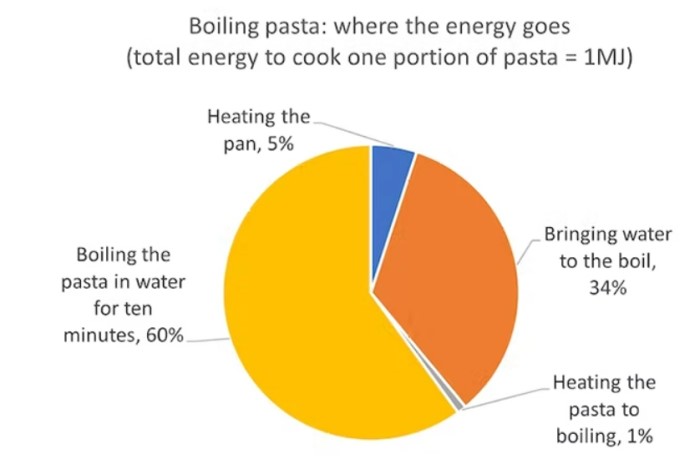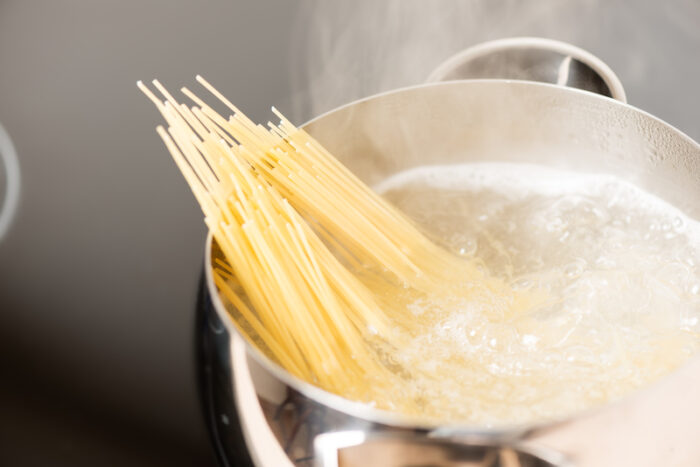Cooking is fun. And the end results are delicious. (Usually!)
But depending on what you make, it does use energy. Whether we use gas or electricity, the kitchen requires power. And with the cost of energy going up, some people have been making suggestions on how to save power as we make the meals that we love so much.
One of the most beloved meals is pasta. (If you want a reminder of one of the reasons why this is true, please check out our General KnOWLedge video on pasta shapes here.) Though cooking pasta is pretty simple, keeping that pot boiling requires high energy.
That is why an Italian physicist named Giorgio Parisi recently stated that his fellow citizens could save a bundle of energy by choosing a different way of cooking their pasta. It involves turning off the heat for the second half of cooking the pasta and placing a lid on the pot.
Giorgio Parisi is a Nobel Prize-winning physicist who says we can cook pasta differently. (Getty Embed)
Of course, many Italians did not like the idea of messing with their pasta perfection! This list of objectors included award-winning chefs like Antonello Colonna, who said Parisi's method would make pasta that was 'rubbery'.
To the test kitchen
Award-winning Italian chef Antonello Colonna is one expert who said that Parisi's method would make pasta that he would never serve in one of his restaurants. (Getty Embed)
This delicious debate in Italy inspired people in England to run some tests.
Mia London and Ross Broadhurst are students at Nottingham Trent University. Under the guidance of their science professor, David Fairhurst, they headed to the kitchen to see what was fact and what was fiction about different ways to make pasta.
Let's see what they discovered!
How do we usually make pasta?
The typical way to make pasta goes like this.
Get a large pot of salted water, ideally about a litre of water per every 100 grams of pasta. Place a lid on and bring it to a rolling boil (this means that the water is vigorously bubbling). Remove the lid and add the pasta. This briefly cools the water back down, so allow the water to heat back up, or 'return to a boil'. Then turn the heat down slightly to keep it boiling. Stir occasionally and cook the pasta for as long as the package instructions suggest. (Different thicknesses of pasta requires different times.)
This pie chart breaks down how much energy is used during each stage of this cooking.

(David Fairhurst, Mia London and Ross Broadhurst/Nottingham Trent University)
According to Fairhurst, two scientific things are happening here.
First, the dry pasta is rehydrating—it is softening by absorbing water.
Second, the proteins in the pasta are being heated, which causes them to "expand and become edible".
Different ways
Students at Nottingham Trent University tested different ways to make pasta. Now that's what we call science! (Getty Embed)
The Parisi method is the exact same for the first half of the process. But once the pasta is added, and the pot returns to a boil, a lid is placed on the pot and the heat is turned off. The lid traps the heat (this is called residual heat). By leaving the pasta in the pot for a minute longer than the cooking time, says Parisi, the pasta will be cooked.
Is he right?
In their tests, Mia and Ross found that the pasta was cooked. And that it was pretty tasty, too! More importantly, it reduced the energy used by half! Not bad, Mr. Parisi.
But that wasn't all that they did. They also experimented with other techniques, such as:
- soaking the pasta in water beforehand to speed up the cooking time
- using 50% less water in the pot (less water will boil faster)
- cooking the pasta at less than a rolling boil (again, this uses less energy)
In all of these cases, they found that the pasta turned out great. In fact, the only method that they tried that didn't make the grade? Using a microwave. (Don't try it, they warned!)
Of course, none of these people are trained gourmet chefs. Pros like Chef Colonna might never use the Parisi method.
But these experiments do remind us of two very important truths. That cooking is science. And that there are always different ways to make the same dish.
In other words, if your family feels like getting together to test the best way to cook pasta this weekend, go for it!
 What is the right way to cook pasta? (ID 46299830 © Nanisimova | Dreamstime.com)
What is the right way to cook pasta? (ID 46299830 © Nanisimova | Dreamstime.com)










I love pasta and the information 🙂